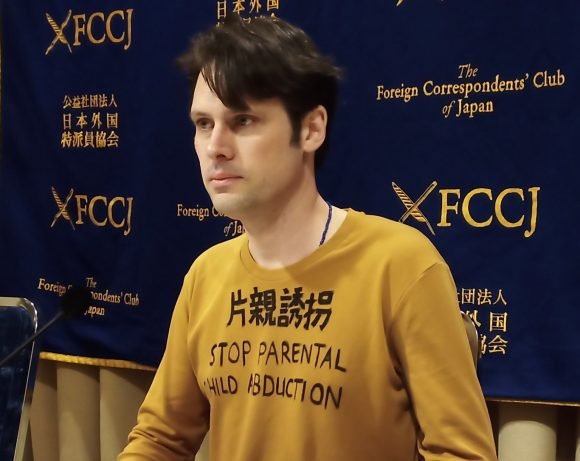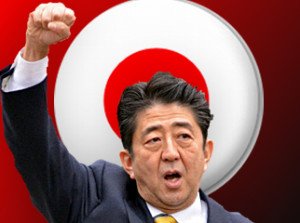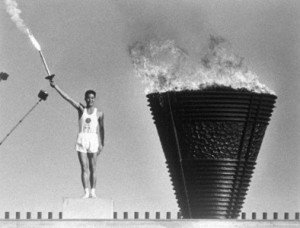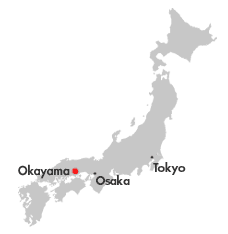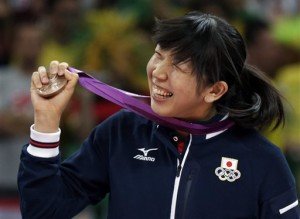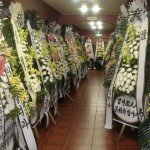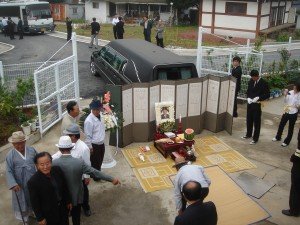How Football Can Change
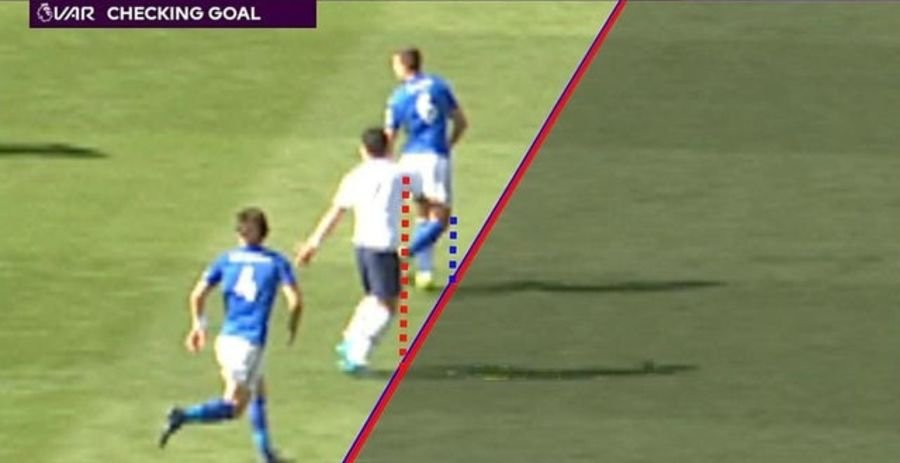
By Fred Varcoe
When Marco Van Basten was Technical Director at FIFA, he came up with a number of ideas to change the game. These included sinbins, no offsides and foul counts for individual players. He didn’t stay long at FIFA, probably because he knew that it is one of the least progressive sports organizations in the world. It still thinks penalties are a good way to decide a World Cup (more on that later).
FIFA is not alone. Many sports organizations are run by fusty old men with no imagination and a misplaced idea of sporting purity. “That’s not football” is probably their motto, but they can still come up with laughable handball rules. Some sports – rugby, volleyball, cricket – have changed with the times and recognized when rules, even the sport itself, had to change. FIFA is change averse, but many fans also have their heads stuck in the sand.
Football desperately needs to reform itself. Even the Premier League is becoming boring. Football has become too predictable and we can probably trace this to Spain and Barcelona, who believed that doing nothing for 85 minutes of a game was entertainment. You can’t argue with results, can you? Can you?
I don’t know, but when I think of great teams, I think of the Arrigo Sacchi’s AC Milan, Alex Ferguson’s Manchester United and Bob Paisley’s Liverpool – winning teams who were great to watch over extended periods of time. Their free-flowing football made them fans around the world and fans of any club watched them with wonder. This was football.
Try watching Tottenham’s Ben Davies or Southampton’s Kyle Walker-Peters (ex-Tottenham) without gnawing your hands off in frustration. I would like to see their stats on passes played forward and passes played backwards. I’m sure backwards wins.
And they’re taking football backwards. In the old days, full backs would hoof the ball forward. Back passes on pitches in the ’70s were dangerous. But Route 1 was actually exciting. It brought an element of randomness and chaos to the game. Predictable, it wasn’t. And, statistically unproven though it is, I don’t believe teams lost possession any more playing football that way than they do with the brain-numbing taki tiki taki crap. Bring back chaos, I say.
The game needs an element of unpredictability and the rules need to change to help that. Other rules also need to change and the people who make the rules need to change. If you have no imagination, you’re not going to improve the game. The geniuses and innovators in our world didn’t succeed by making small adjustments to their products, they brought something new to the table. So let’s try and see what new things could be brought to football’s table. Some are practical, conservative even; others might seem a little strange, but they work for me, but probably because I haven’t wasted energy overthinking them.

The Changes
- No offside.
Van Basten says: “I think it can be very interesting watching a game without offside. Football now is already looking a lot like handball with nine or 10 defenders in front of the goal. It’s difficult for the opposition to score a goal as it’s very difficult to create something in the small pieces of space they give you. So, if you play without offside you get more possibilities to score a goal.”
It’s been tried before, but I don’t think anyone took it seriously. But why shouldn’t it work? When you see the amount of goals ruled out for marginal offsides, it is frustrating. Defenders should be marking players, not jumping in front of an invisible line on the pitch. How would it change the game? Defenders would still have to mark players and the most efficient way of marking them is to be goalside. Attackers would still be trying to get past the defender. Not having an invisible line to worry about would give the attacker an advantage and that’s what football wants. And it would, as Van Basten says, open up the pitch, make the game wider and more attack-minded. And it would allow referees’ assistants to monitor more important aspects of the game. Ditto for VAR. It would make life a lot easier and keep football flowing.
- No offside running into your own half
Bit of a dumb rule at the moment. You can’t be offside in your own half unless you run from an offside position in the opposition’s half. Pointless, isn’t it. If you are going to have offsides, this shouldn’t be part of it.
- No passing back over the halfway line
The horror of possession football is the pass back. Not a little pass to a guy behind you or lateral from you, but a series of pass backs that takes the ball from the corner flag all the way back to the keeper. This is my No. 1 choice for a rule change. It also gives the linespeople something to do. Cut out the safety-first pass back to your center-half or goalkeeper and the game will liven up. The attacking team will have to look forward instead of backward. It will make life more difficult for them, so adding danger/ chaos/ unpredictability to the game. It will also put Ben Davies and Kyle Walker-Peters out of a job. Next time you watch a match, think how the dynamic of that match would change if this rule was introduced. You know it makes sense.
- No penalties
After watching VAR disrupt football, this one’s a no-brainer for me. Again, there’s limited logic to the penalty area. You get penalized to the same degree for a little (sometimes accidental) trip or handball in the corner of the penalty area by the byline as you do for a deliberate goal-stopping handball. Even with VAR (especially with VAR?), the merit of a free goal is, more often than not, disproportionate to the offense. The penalty area should actually be the goal area with the side lines extending from the goalposts. If there’s a foul in there, you get a regular penalty. Outside of that, it’s just a free-kick as per the rest of the pitch. The penalty area will then just be the area where the goalkeeper can handle the ball. IF there are penalties in a game, as soon as the ref has awarded one, all players must exit the penalty area except the kicker and the goalkeeper, who must go directly to his goal and stand on the line.
- Three seconds for keepers to release the ball
And talking of goalkeepers handling the ball…. there’s a rule that’s crying out for change. The keeper is meant to release it within six seconds. Nowadays, nobody’s counting. When did you ever see a ref penalize a goalkeeper for holding on to the ball too long? You didn’t. So, the new rule is: three seconds. That’s three seconds from the point where the goalkeeper is in control of the ball and unimpeded and on his feet with the ball in his hands. Failure to release the ball will hand the opposition an indirect free-kick from any spot on the perimeter of the penalty area. I get the impression referees don’t want to count to six; I’m sure they can handle three.
- No goal kicks
They’ve become a bit of joke, but that’s partly because players aren’t as clever as they think they are. Simple answer: no goal kicks. The keeper merely has to get rid of the ball from anywhere in the penalty area to another player in any way he likes. We’re trying to get the game moving. This does it.
- Free throw-ins
Why do we have such a formalized method of throw-ins? I don’t think we need it. It would be far more exciting and probably less time-consuming if the thrower could just chuck the ball back into play any way he wants. The ball could go further and it would take less time. And it would be an advantage to the team in possession. Throw-ins now are often so heavily defended (often in a confined space), they are often a liability. Unrestricted throw-ins is the answer. As with the goalkeeper above, there should be a time limit. For throw-ins, four or five seconds once the thrower has the ball under control. And he’s not allowed to hand it to another player to waste time. And if no one moves to take the throw, the nearest player to the ball gets a yellow card.
- Corner kicks
The area from which corners are taken should be extended. One idea is to increase it from 1 meter to 2 meters and most of the ball should be within the line markings, not 1 millimeter inside the outside of the line. Personally, I would like to see time limits for taking corners: 20 seconds should be enough. The extremist in me would also limit the number of players who can be in the box when the corner is taken to four from each team plus the defending goalkeeper. Another idea, possibly a better idea, is for the corner area to be 10 meters, which is the limit for opposing players, and the corner can be taken anywhere within that 10-meter quadrant. In theory you could take it on the edge of the quadrant, but the opposition would be able to block it, so in practice players would take it nearer the sideline to give them more space.
- No penalty shootouts
OK, the purists will say I’m being extreme here, but actually, I’m the purist. The penalty shootout is a curse on the game. OK, it’s decisive and can be exciting in a masochistic kind of way, but it’s a terrible, terrible way of deciding a World Cup final or two-leg European Champions League semi. Football games should be decided by actual football or something very close. The fact that FIFA hasn’t even thought about changing from penalty shootouts shows their complete lack of imagination and sheer incompetence. So, how do you change it? I always liked the idea of sudden-death goals, but apparently TV companies didn’t because it left empty air time. And it still doesn’t guarantee a finish to the game. My solution will help, although it’s not guaranteed. If extra time is needed, the first session should be 20 minutes. The difference is each team has to lose two players. If there’s no result after 20 minutes, you play another 20 minutes. This 20 minutes is sudden-death – the first goal wins – AND there are no goalkeepers, although multiple substitutions can be made. That should get a result. If not, maybe I’ll allow penalties, but there is a better alternative….
- Corner shoot-outs
Van Basten has suggested the old American style shootout where a player dribbles the ball unopposed from outside the box and has to score within 10 seconds, but if you want to do away with extra time, there’s a better way: corner shoot-outs. Each team gets 10 corners from which they can score within 10 seconds after the kick is taken. Only four players from each team is allowed plus the kicker and the defending goalkeeper. The corners are taken in groups of five. If there’s no result after 10 corners, you just keep going until you get one. You could also reduce the number of players to three, two or even one from each team. My ideas involve much more real football than the penalty shootout, so the purists should be on my side, not FIFA’s.
- More cards
I believe it was before the 1994 World Cup when FIFA said they wanted more aggressive refereeing. So the refs got more aggressive and started dishing out lots of cards. Fans didn’t like it, so FIFA, spineless as ever, told the refs to stop showing cards so liberally. It was a golden opportunity to make the game better. If FIFA had had the courage of their convictions, football would have changed. They just had to stick with the program. One idea of strengthening the position of referees is for infractions to have a points system of one to four or five points. Sounds a little complicated, but it’s not. A bad foul is five points. If you get 10 points, you’re off. Kicking the ball away or swearing at the ref could be two points. Time wasting is one point (it’s not really much of an infringement as the ref can always add time on – more if he’s vindictive). It won’t be hard on the refs. All they have to do is put the points total on the card and show one to five fingers to the player. And it’s the responsibility of the player to check, not the responsibility of the referee. To help the referee, the fourth official should be allowed to advise on or even make decisions in the event that the referee misses something or makes a mistake.
Plan B is to have three cards: yellow, blue and red. Yellow would be for minor infractions, blue for fouls and deliberate handball and red for anything Roy Keane has done. Four yellows, two yellows and a blue or two blues results in a red.
- Rugby rules
Rugby has a pretty disciplined approach to the rules and football should have the same, so we need to adopt some of rugby’s rules.
a. Sinbin: I haven’t figured this out exactly, but sometimes two yellow cards is not equivalent to a red. Players are getting red-carded for treading on people’s feet, while Jordan Pickford gets nothing for turning the best defender in the world into a cripple. The good thing about the sinbin is that it is instant justice affecting the two teams as they play;
b. 10-yard rule: This has been mentioned but never seriously considered. If a team is awarded a free-kick against them, then the rule should be that no opposition player can touch the ball until the free-kick is taken so we can do away with this childish habit of not returning the ball to the team that gets the free-kick and play can resume quicker. Also, if a player fails to make an effort to retreat 10 yards from the ball, the attacking team can move the ball forward up to 10 yards. It should be the responsibility of the player to get away from the ball, not the responsibility of the referee. Penalty for not doing so: another 10 yards and a yellow card;
c. No complaining: Only the captains can question a decision by an official and all players must keep a distance of at least 2 meters from the referee when the ball is dead. Players swearing at the officials shall get a yellow card;
d. Bonus points: It’s about time teams were rewarded for scoring goals. I would prefer to see a system of, for example, 10 points for a win, five for a draw and a point for each goal scored. Hopefully, this would end the pathetic system of deciding a league on goal difference. No major league placings should be decided on goal difference. If two teams are equal on points, have a playoff.
e. Don’t stop for injuries or substitutions: Medical staff should be allowed to enter the field of play at their discretion, but play should not stop (except for certain extreme circumstances). Likewise, the fourth official can take care of substitutions instead of the referee. Again, play needn’t be held up.
- VAR
There are those who say that the offside rule is clearcut, so if your fingernail is in front of the defender’s toe, you’re off. But is the letter of the law defeating the spirit of the law? If you’re going to draw lines across the pitch to check for offside, then go all out. My answer is to draw lines from points on the head, chest, hip, knee and toe. If three of the points are offside, it’s offside. Otherwise, it’s OK. Can VAR handle this? I actually suspect VAR technology isn’t very good, but if it is good, then use it properly. Going the other way, perhaps there should be no lines at all and no slow motion (others have suggested having a player making the call as well as the VAR official). At least then you’re getting a more realistic on-pitch decision. But you’d still want VAR to determine the really big things, like did the ball go into the net.
- Stop clock
In the 2021/22 season, the average time the ball was in play was around 55 minutes but some games barely make 40 minutes, while others got close to 70. Time added on by referees often seems random and time-wasting is still a common practice. A time clock is a no-brainer
****
My image of the football that I love is that it is basically a non-stop game with a large helping of unpredictability combined with skill. My current view is that most teams are intent on playing by numbers and the backpass is now a tactic rather than an act of desperation. The chaos of my cherished football also led to more moments of inspiration. Football used to be an organic game; each match had a life and identity of its own, and players had identities, unlike the plug-and-play mercenaries of today. Football needs to move itself and its players out of the comfort zone and rediscover its imaginative qualities.

